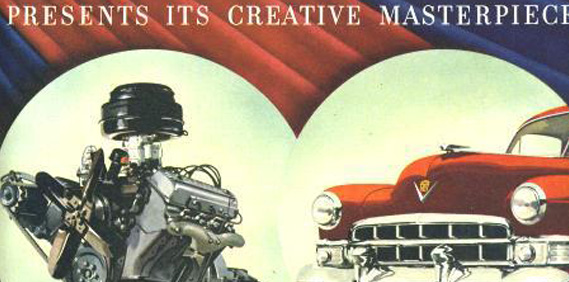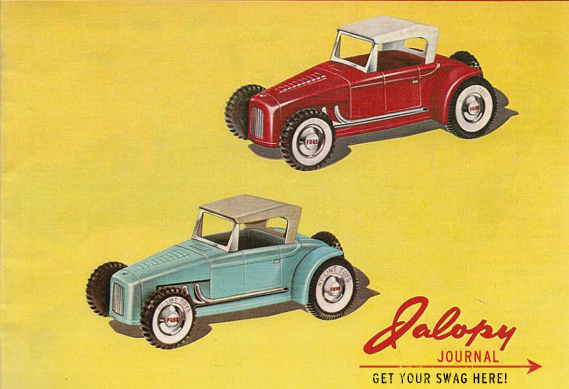Milestone Motor: The 1949 Cadillac 331

1949 was a very big year in the American automotive industry. It was really the first year that all the manufacturers had completely brand new product from post-War designs. Besides all new exterior styling from Detroit, with fenders integrated into body shells, there were new engines premiering as well. Ford updated the faithful L-head V-8 with new heads, larger capacity, and an improved ignition system. The big news, however was really from General Motors: An entirely new, advanced, overhead valve V-8 showed up at Cadillac that was a technical marvel to say the least. (note: Olds had the all new 303 that year as well, but the motors are not physically related)
The 1949 Cadillac 331 was not only milestone for it’s technical achievements, but for the fact that it influenced every other OHV V-8 design for many year to come. Engineer’s Ed Cole, Harry Barr, and Jack Gordon designed the heart of this new engine with “slipper” pistons (which had been invented by Byron Ellis back in the ’30s), basically cutting away the side skirts so the pistons could “slip”down closer to the crankshaft counterweights at the bottom of it’s stroke. This was the secret weapon of the 331, as it mean the connecting rods could be significantly shorter, allowing the whole motor to be shorter and narrower overall, and the block crankshaft and bearings to all be lighter. The lighter block mean better cooling and a lighter radiator and cooling system.In fact, the 1949 Cadillac OHV produced more horsepower and torque than the 1948 Flathead Caddy, and weighed a whopping 200 pounds less! The overall result was excellent power-to-weight ratio, good fuel economy, and smooth performance.
There were other major improvements as well, including five main bearings (unheard of since the 1920s Lincoln V-8) which allowed the crankshaft to be fulled supported at every turn. The block was also one of the first to be designed at it’s conception with future bore and stroke increases in mind. That’s right, they left enough meat in the block for the engine size to safely increase over the years, which it did to 365, and 390 cubic inches. This is one reason why hot rodders loved the motor- It was also under-stressed in it’s design and able to handle a blower or major tweaks with very little effect on it’s reliability. The compact size also meant it could fit under the hood of a ’40 Ford or even a ’32 Roadster with fairly mild firewall adjustments.
The Flathead Ford 59AB could be bored and stroked to just under 300 cubic inches, and still ‘only’ deliver 180 – 190 horsepower in a radical racing tune. The stock 1949 331 made 160 horsepower, and with fuel and ignition modifications made upwards of 300 hp under the hoods of Allards and Cunninghams racing at 24 hour endurance events. It was the beginning of the end for the old Flattie (or was it???), and the beginning of the overhead valve V-8 era that all the major manufacturers eventually folded to.
Cadillac 331 = Milestone V8.
(Most engine photos courtesy of previous HAMB posts…)
……..












